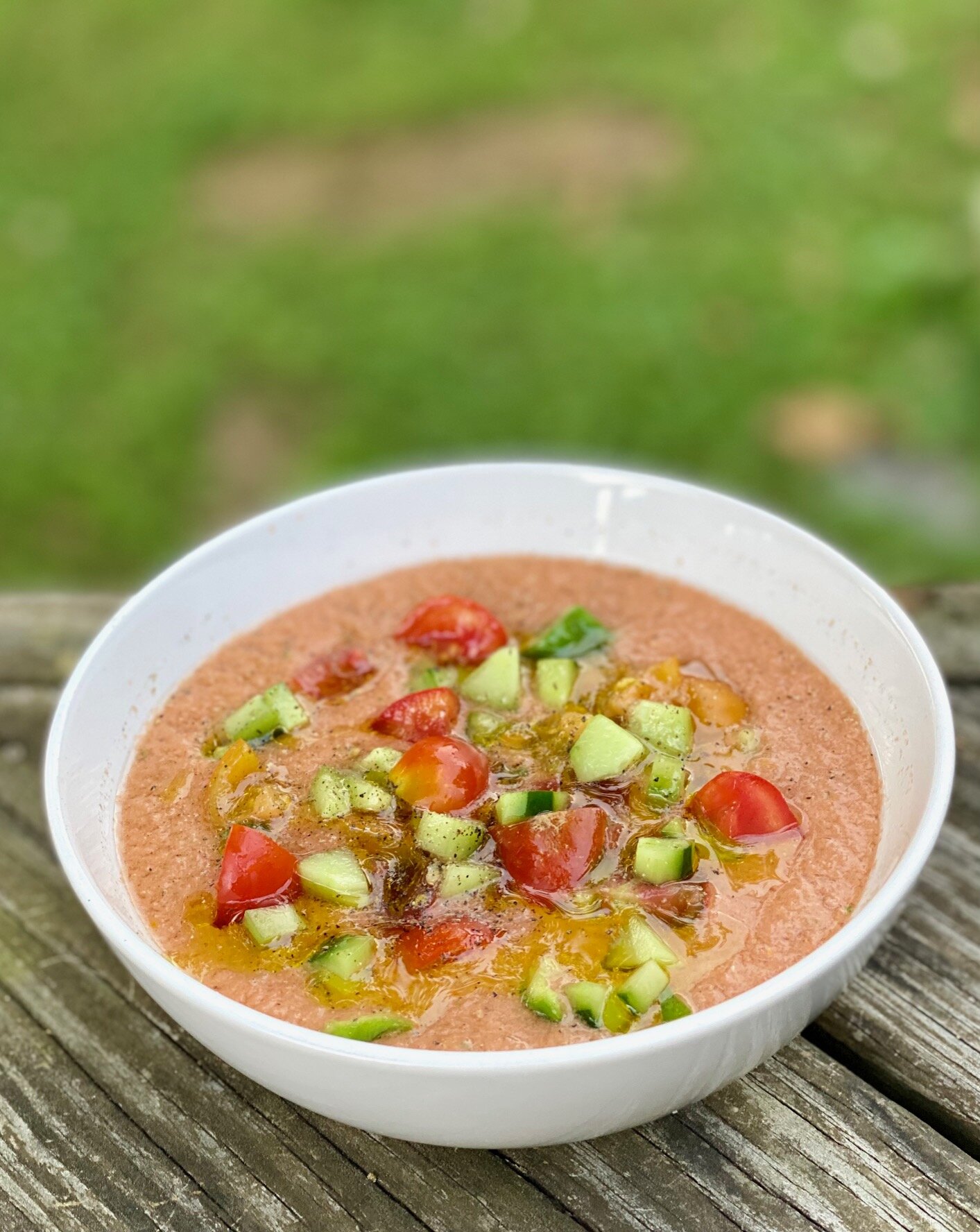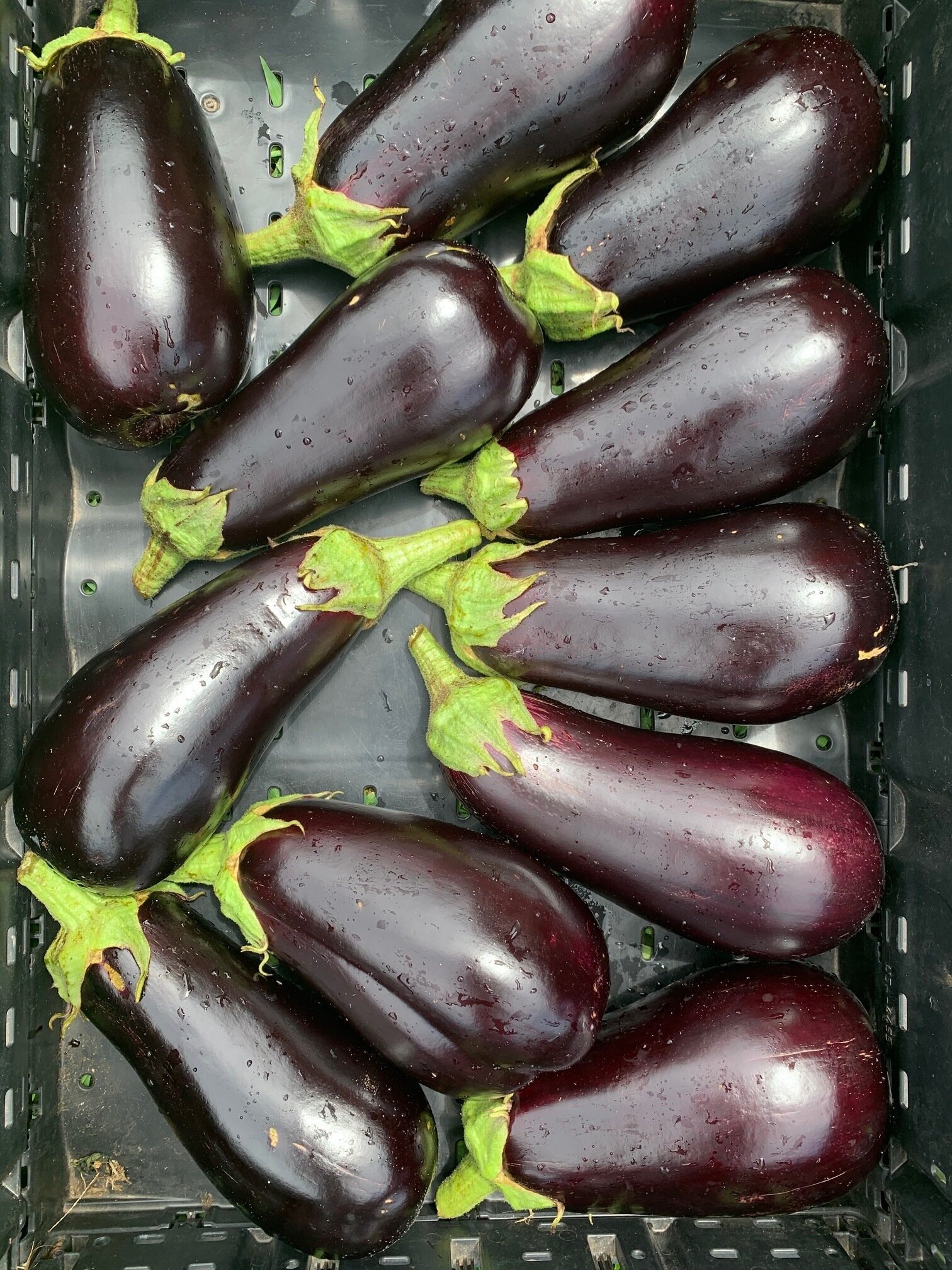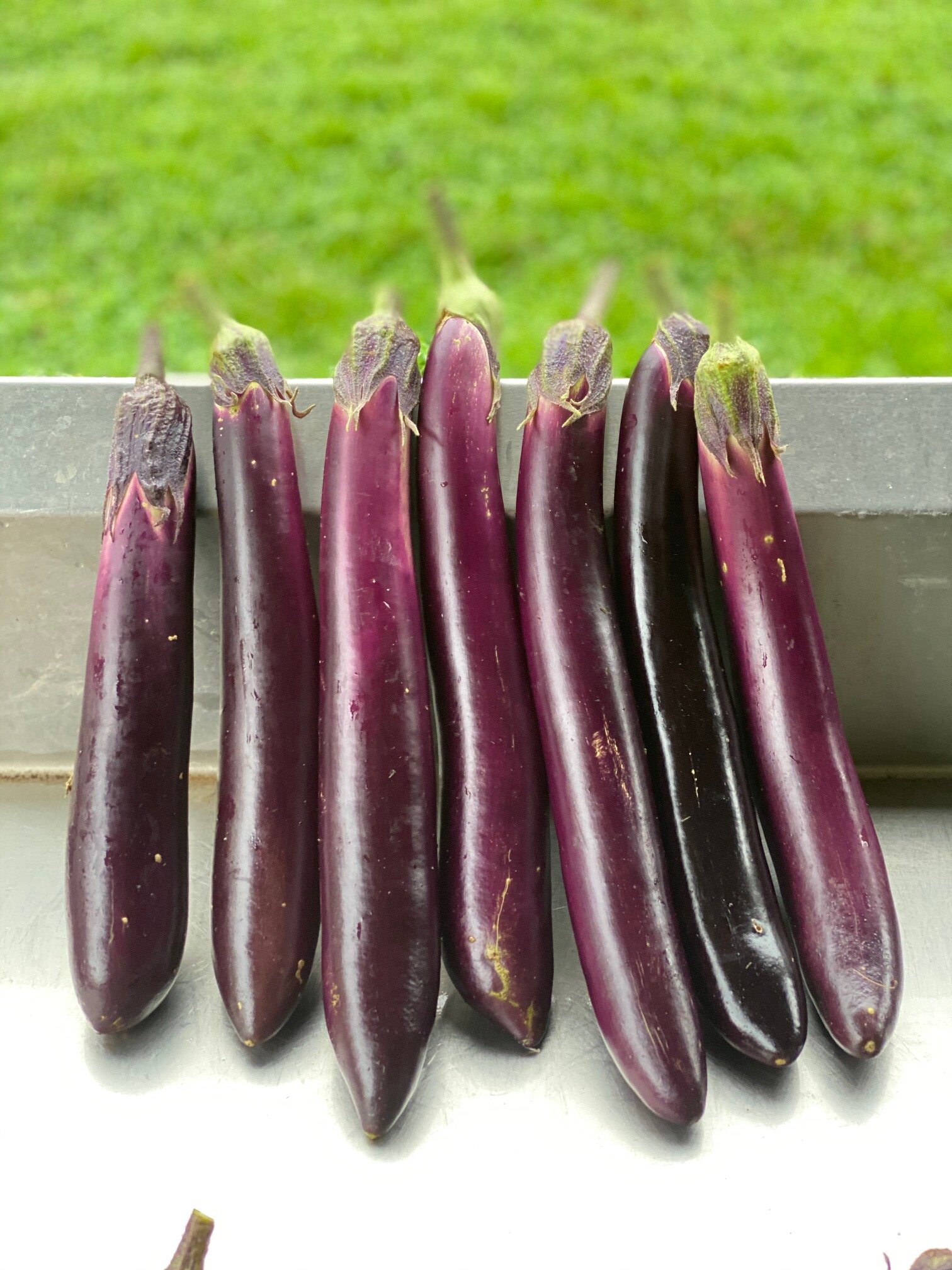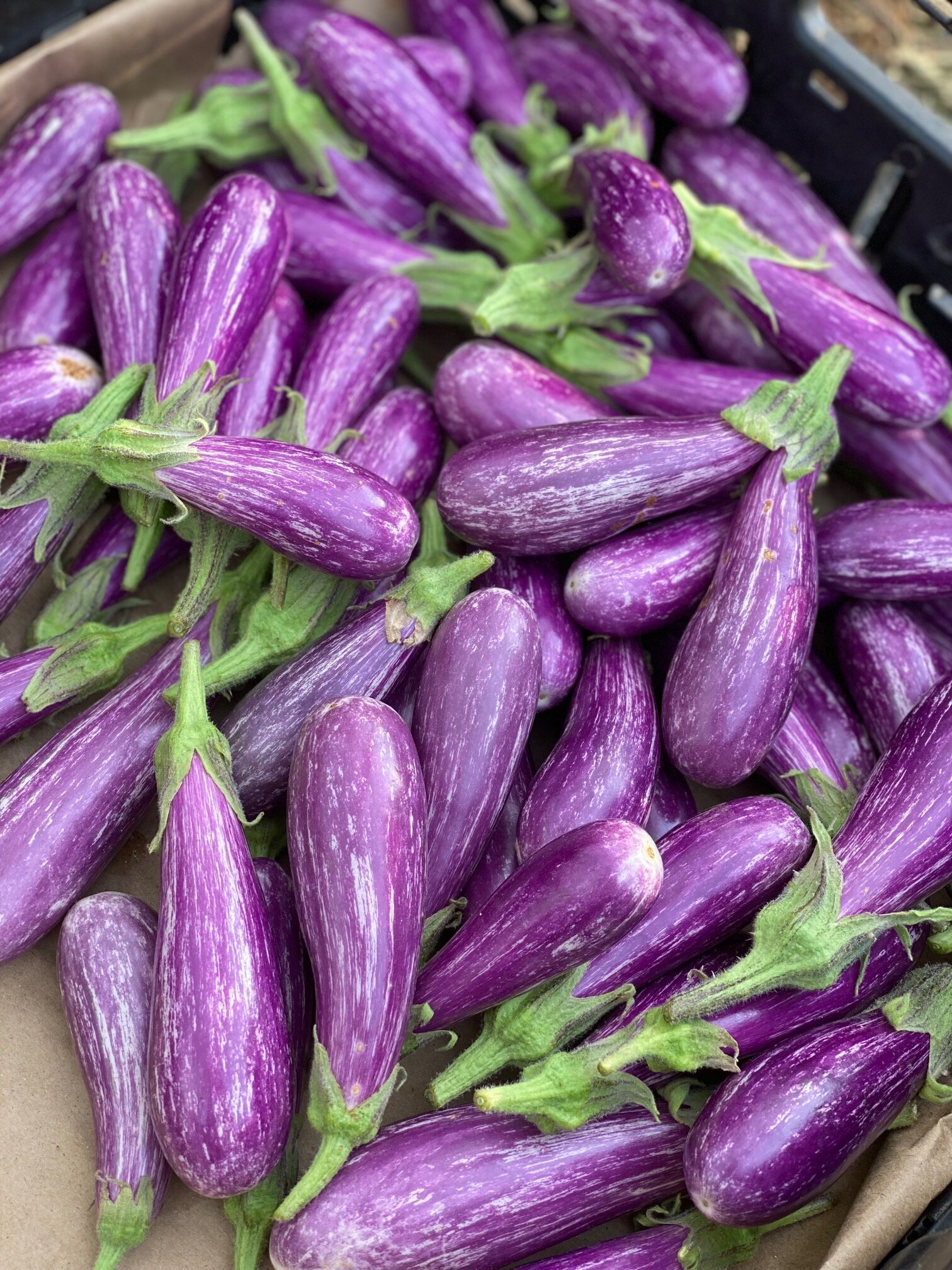Farm Notes
Holy guacamole, it’s been a hot one! It seems like around the country, we’re feeling the summer heat, and I hope that you (and your plants / animals) are taking care and staying cool in this sweltering late July season.
Heat and all, this week on the farm we’ve continued to have abundant harvests of summer veggies… alllll the peppers, tomatoes, okra, eggplant, etc etc! This week we’ve especially hit our stride when it comes to peppers – right now we’re harvesting shishitos, padrons, jalapeños, poblanos, serranos, sweet italian peppers, and colorful sweet bells… and we have a few more varieties still to come! I’d say my favorite pepper right now are the shishitos… I’m a total baby when it comes to heat, and these peppers are mild but still full of flavor, and I love blistering them in a hot pan with some oil, garlic, and a quick squeeze of lemon juice. Shishitos are often compared to (and confused with) padron peppers, which are a bit shorter/squattier and definitely pack more heat! Below is a photo of both kinds of peppers, in case it’s helpful to keep them straight (shishitos on the left, padrons on the right):
Shishito (on the left, smaller in size) and Padron (on the right, larger in size) peppers!
As for some other farm updates… we’re still hustling to get beds prepped for fall planting, which will begin next week and continue through mid-August. It always feels a little crazy to be planting so many tender cool weather crops in the blazing August heat, but somehow the little plants (mostly) pull through and make for a delicious fall, which will be full of dark leafy greens, colorful root veggies, and hearty winter squash.
Speaking of getting ready for fall – this week we got a load of beautiful compost that will last us through the fall/winter and into early spring. While we do compost our excess food and garden material here at the farm, the process of making super high quality compost that will properly nourish our veggies is a real science, so we buy in all of the compost that we use to amend our soil. Maybe someday we’ll dial in our composting to the point where I would feel confident using it on our beds, but for now we’re really happy with the product we get from Brooks.
PS – We’ve actually snuck off the farm again for a few days, as my brother is getting married this weekend in Kansas City! It’s always a lot of work to get off the farm, and I’m so grateful to all the friends and neighbors who help me keep everything humming along whenever we’re away.
Kitchen Notes
This week I made a giant batch of one of my favorite summer dishes… roasted ratatouille, served over a giant bowl of creamy polenta and topped with fresh basil from the garden. It’s my kind of meal for so many reasons – 1) it uses up heaps of excess (and imperfect) summer veggies, 2) requires minimal prep/mess, and 3) tastes even better the next day (ie perfect for leftovers). I’m excited to share the recipe here… which is a very loose and forgiving recipe, and is a much quicker technique than a traditional ratatouille recipe (which calls for sauting each vegetable separately in a pan… ain’t no one got time for that)! So feel free to mix it up and use whatever you have on hand, and I hope you enjoy this dish as much as we do. :)
ROASTED RATATOUILLE
INGREDIENTS
1 large eggplant, chopped to 1” dice
2 bell peppers (red, orange, or yellow), chpped to 1” dice
2 zucchini/summer squash (green and/or yellow), sliced into rounds or half moons
1 red onion, sliced into half moons
3-4 cloves garlic, smashed
2-3 tablespoons olive oil
1 spring fresh rosemary, finely chopped
2 teaspoons fresh thyme, finely chopped
1/2 teaspoon dried oregano
2-3lbs tomatoes (heirlooms, slicers, or cherries), roughly chopped
Kosher salt and pepper to taste
2 tablespoons balsamic vinegar
Fresh chopped basil (to garnish)
PREPARATION
Preheat oven to 400°F.
Chop the eggplant, peppers, zucchini, red onion and smashed garlic and combine on a rimmed baking sheet. Toss the vegetables with 2 tablespoons of olive oil and the rosemary, oregano, thyme, and salt and pepper to taste. Make sure the veggies fit in a single layer (if needed, use two trays) and roast for 25 minutes, stirring halfway through to ensure even cooking.
After the vegetables in the oven have been cooking for 25 minutes and are beginning to brown, add the chopped tomatoes to the baking tray.
Continue to roast vegetables, turning with a spatula once or twice to ensure even cooking for about 30 more minutes, or until tender and browned and most of the liquid has evaporated. Season with a few tablespoons of balsamic vinegar, and add any additional salt and pepper to taste.
Serve warm on a large platter garnished with a few splashes of good olive oil and finely chopped fresh basil.
CREAMY POLENTA
Today’s Stats
Low temp: 73F
High temp: 95F
Sunrise: 6:22am
Sunset: 8:25pm
Moon phase: Waning Gibbous
Additional notes: Sunny, hot and humid




















